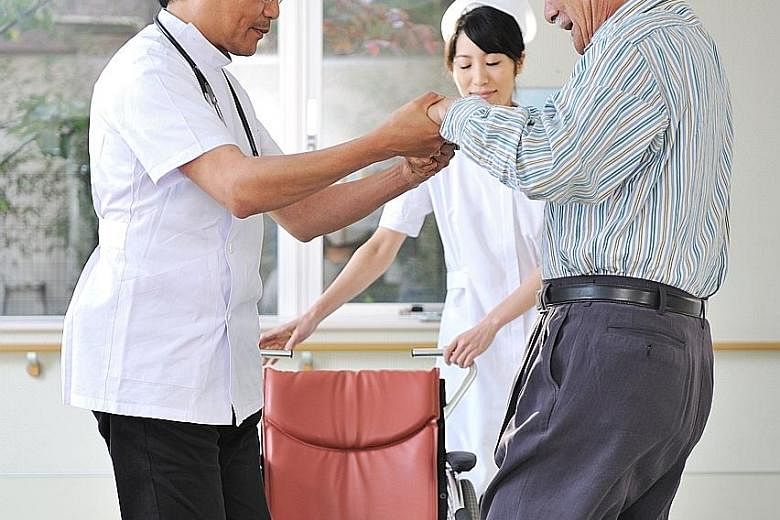BOSTON • In 2005, when physician Kevin Biese was a medical resident in Boston, a 92-year-old woman with a urinary tract infection arrived by ambulance at a hospital's emergency room (ER). Her behaviour, which included confusion and lethargy, suggested she was also suffering from a cognitive disorder.
She was alone, without family or friends. The doctors decided to admit her, but a bed was not available.
"She spent 24 hours on a cot in the hallway," Dr Biese said. "She came in during the day on a Thursday and was still there the next morning."
Nobody enjoys a trip to the ER.
But it can be especially difficult - sometimes even dangerous - for the elderly.
Many emergency health-care settings are frenzied and noisy, with glaring lights and slippery floors, often without handrails. Cots and gurneys are hard on fragile bodies.
Privacy is scarce.
"The emergency department is not a great place to hang out for anyone, but it can be especially tough if you are older," said Ms Denise Nassisi, director of the geriatric emergency department at Mount Sinai Hospital in New York.
"Many older patients have difficulty getting up and down from a gurney or getting to a toilet. Some have cognitive dysfunction and don't know their medical history.
"Some may have impaired vision or hearing. A crowded, chaotic environment is not the best for them."
In recent years, recognition has been growing that older patients need a better ER environment and specialised care than the rest of the population. This has prompted many hospitals to make their ERs age-friendly.
The American College of Emergency Physicians launched an accreditation programme last spring for emergency departments to encourage them to adopt a more comprehensive and standardised approach for geriatric patients.
The percentage of Americans 65 or older was 14 per cent in 2012 and is projected to be 20 per cent by 2030, according to the Centres for Disease Control and Prevention.
The top complaints that bring the elderly to emergency departments are falls, abdominal pain, difficulty in breathing, fever, chest pain, confusion or other cognitive issues.
Many emergency departments, while effective in dealing with acute problems, do not always look at the big picture when it comes to older patients. This means comprehensive screening procedures to check all medications and health history, as well as conditions at home, with the aim of not having to admit them to the hospital.
Hospitalising the elderly brings its own risks and many patients have difficulty returning to their earlier functioning state.
"We want to look at all their needs and problems, including medical and social problems," said Mr Zia Agha, chief medical officer at West Health Institute in San Diego.
Mount Sinai emergency medi-cine researcher Ula Hwang said: "We need to make sure we aren't just treating (the emergency), but treating it well enough so the patient doesn't have to come in with the same problem once a month."
The new voluntary accreditation includes certain requirements, such as having doctors and nurses with geriatric training, and environmental criteria such as mobility aids and easy access to water.
The programme so far has accredited 22 hospital emergency departments, but Dr Biese, who manages it, predicts that more of the nation's estimated 5,000 emergency departments will apply for and receive geriatric certification.
Holy Cross Hospital in Maryland has installed walls to separate its treatment bays, rather than curtains, to ensure added privacy and calm.
Older patients are assigned cots with thicker mattresses and given heated blankets; and have access to special speakers that make it easier to listen to music or watch TV, as well as telephones and remote control devices with large buttons.
The area features softer lighting, handrails and non-slip floors.
Dr Biese believes that such a programme could have made a difference for his elderly patient 13 years ago. Today, her urinary tract infection would have been treated quickly with intravenous antibiotics and she would have undergone further evaluation with the aim of discharging her with follow-up care at home.
"Today, emergency departments are instituting processes and enhancements to address older patients' vulnerabilities and make them more comfortable," he said.
"These programmes matter to the patient and the community. When our loved ones have an emergency, we deserve to know that there is a (geriatric) emergency department ready to take care of them."
WASHINGTON POST

